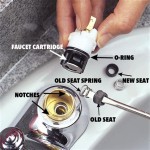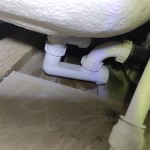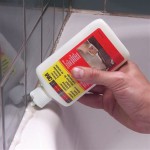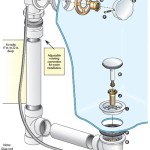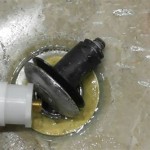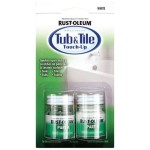Bathtub Faucet Shower Diverter Stuck: Causes, Troubleshooting, and Solutions
A malfunctioning bathtub faucet shower diverter is a common plumbing issue encountered in many households. The diverter's primary function is to redirect water flow from the bathtub faucet to the showerhead and back. When this mechanism becomes stuck, it can lead to a frustrating and inconvenient situation, forcing users to either take a bath instead of a shower or vice versa. Understanding the potential causes behind a stuck diverter, coupled with methodical troubleshooting steps, is crucial for resolving the problem efficiently. Furthermore, knowing when to seek professional assistance ensures the issue is properly addressed without causing further damage to the plumbing system.
The anatomy of a bathtub faucet diverter typically involves a valve mechanism, often a pull-up knob, a lever, or a push-button device, situated on or near the bathtub faucet. This mechanism controls the flow of water by opening or closing passages within the faucet body. Over time, various factors can impede the smooth operation of this mechanism, resulting in the diverter becoming stuck in either the bathtub or shower position.
Common Causes of a Stuck Bathtub Faucet Shower Diverter
Several factors can contribute to a bathtub faucet shower diverter becoming stuck. Identifying the root cause is essential for determining the appropriate solution. These include:
Mineral Buildup: Hard water, which contains high concentrations of minerals like calcium and magnesium, can lead to mineral deposits accumulating within the diverter valve. These deposits, often referred to as limescale, can restrict the movement of the internal components, causing the diverter to stick. The accumulation occurs gradually, making it difficult to notice until the diverter's operation is significantly impaired.
Corrosion: Corrosion, particularly in older plumbing systems, can affect the diverter valve. The corrosive process weakens the metal components, leading to damage and restricted movement. Exposure to water and humidity accelerates corrosion, which can eventually cause the diverter to seize entirely. Signs of corrosion may include rust or discoloration around the diverter valve.
Debris Accumulation: Sediment, hair, and other debris can find their way into the water supply and, subsequently, into the diverter valve. This debris can obstruct the internal mechanisms, preventing the diverter from moving freely. A clogged diverter feels stiff and requires excessive force to operate, which can further damage the components.
Worn or Damaged O-Rings and Seals: The internal components of the diverter valve rely on O-rings and seals to create a watertight seal and ensure smooth operation. Over time, these rubber components can become worn, cracked, or brittle, compromising their ability to function effectively. A deteriorated O-ring can cause the diverter to leak or stick in one position.
Mechanical Failure: Internal mechanisms, such as springs, levers, or plungers, can break or malfunction due to wear and tear. This is more prevalent in older diverters or those subjected to frequent use. A broken spring, for instance, may prevent the diverter from returning to its default position, leaving it stuck.
Troubleshooting a Stuck Bathtub Faucet Shower Diverter
Before attempting any repairs, it is imperative to turn off the water supply to the bathtub faucet. This usually involves locating the shut-off valves, often located near the faucet beneath the tub access panel or elsewhere in the bathroom. Once the water supply is shut off, the following troubleshooting steps can be employed:
Visual Inspection: Examine the diverter handle and surrounding area for any visible signs of damage, such as cracks, rust, or mineral buildup. A close visual inspection can often reveal the underlying problem without requiring disassembly.
Gentle Manipulation: Try to move the diverter handle gently in both directions. Avoid applying excessive force, as this can exacerbate the problem or cause further damage. Sometimes, a slow, deliberate movement can dislodge minor obstructions.
Cleaning the Diverter: If mineral buildup is suspected, a solution of white vinegar and water can be used to dissolve the deposits. Apply the solution to the diverter handle and surrounding area, allowing it to sit for several minutes before gently scrubbing with a soft brush. Rinse thoroughly with water.
Lubricating the Diverter: A silicone-based lubricant can be applied to the diverter handle and stem to improve its smooth operation. Avoid using petroleum-based lubricants, as they can degrade rubber components. Apply the lubricant sparingly and work the diverter handle back and forth to distribute it evenly.
Checking Water Pressure: Low water pressure can sometimes affect the operation of the diverter. Check the water pressure in other faucets in the house to rule out a general pressure issue. If the water pressure is low, investigate potential causes, such as a partially closed shut-off valve or a problem with the main water supply.
Solutions for a Stuck Bathtub Faucet Shower Diverter
Based on the identified cause, several solutions can be implemented to address a stuck bathtub faucet shower diverter:
Disassembling and Cleaning the Diverter Valve: If the diverter remains stuck after external cleaning and lubrication, disassembly may be necessary. Consult the faucet manufacturer's instructions or search for online videos demonstrating the disassembly process for the specific faucet model. Once disassembled, thoroughly clean all components with a vinegar and water solution to remove mineral deposits and debris. Replace any worn or damaged O-rings and seals.
Replacing Worn or Damaged Parts: If the visual inspection or disassembly reveals worn or damaged components, such as O-rings, seals, or springs, these should be replaced. Obtain replacement parts from a local hardware store or plumbing supply store. Ensure that the replacement parts are compatible with the specific faucet model.
Flushing the Water Lines: Sediment and debris in the water lines can contribute to a stuck diverter. Flushing the water lines can help remove these contaminants. After turning off the water supply, disconnect the faucet from the water lines and flush the lines with water until the water runs clear. Reassemble the faucet and restore the water supply.
Diverter Valve Replacement: In some cases, the diverter valve may be irreparably damaged and require replacement. This is often the case with older faucets or those with severe corrosion. Replacing the entire valve assembly is generally a straightforward process, but it may require some plumbing experience. Ensure that the new diverter valve is compatible with the existing faucet and plumbing system.
Professional Plumbing Assistance: If the troubleshooting steps and solutions outlined above do not resolve the issue, or if the individual lacks the necessary skills or experience, seeking professional plumbing assistance is recommended. A qualified plumber can diagnose the problem accurately and implement the appropriate solution, ensuring that the plumbing system is not damaged in the process. Furthermore, a plumber can identify underlying issues, such as problems with the water supply or plumbing fixtures, that may be contributing to the recurring diverter problems.
Preventative measures can help minimize the likelihood of a bathtub faucet shower diverter becoming stuck in the future. Installing a water softener can reduce mineral buildup, while regular cleaning of the diverter and faucet components can remove debris before it accumulates. Additionally, periodically lubricating the diverter handle can ensure smooth operation and prevent it from seizing. These proactive steps can extend the lifespan of the diverter and minimize the need for costly repairs.
The importance of identifying the type of diverter is crucial for successful repair or replacement. Diverters come in different designs, including tee-handle diverters, pull-up diverters, push-button diverters, and rotating diverters. Each type has its specific mechanism, and the repair process varies accordingly. Attempting to fix a diverter without understanding its type can lead to further damage.
The selection of the right replacement parts cannot be overemphasized. Using generic or incompatible parts can lead to leaks, improper function, and even damage to the faucet. Always refer to the faucet manufacturer's specifications or consult with a plumbing professional to ensure the correct replacement parts are used. Part numbers and model numbers are often stamped on the faucet body or can be found in the original product documentation.
In the event of a severely corroded or damaged faucet body, the entire faucet assembly may need to be replaced. This is more common in older homes with outdated plumbing. Replacing the entire faucet can provide an opportunity to upgrade to a more efficient and aesthetically pleasing model. When selecting a new faucet, consider factors such as water efficiency, durability, and ease of maintenance.

Diy How To Fix Shower Tub Stuck Spout Vinegar Diverter Bathtub

Shower Tub Diverter Quick Fix Pull Spout Repair For Sticky Leaky

Diy How To Fix Shower Tub Stuck Spout Vinegar Diverter Bathtub

Trick To Remove That Stuck Tub Spout

How To Free A Stuck Shower Faucet Spout

Loosen Your Tub S Stuck Faucet Diverter With This Handy Household Spray

How To Free A Stuck Shower Faucet Spout

Troubleshooting A Stuck Shower Faucet Diverter Doityourself Com

How To Fix A Stuck Bathtub Spout Leaking

How To Remove Stuck Shower Diverter Stem
Related Posts

